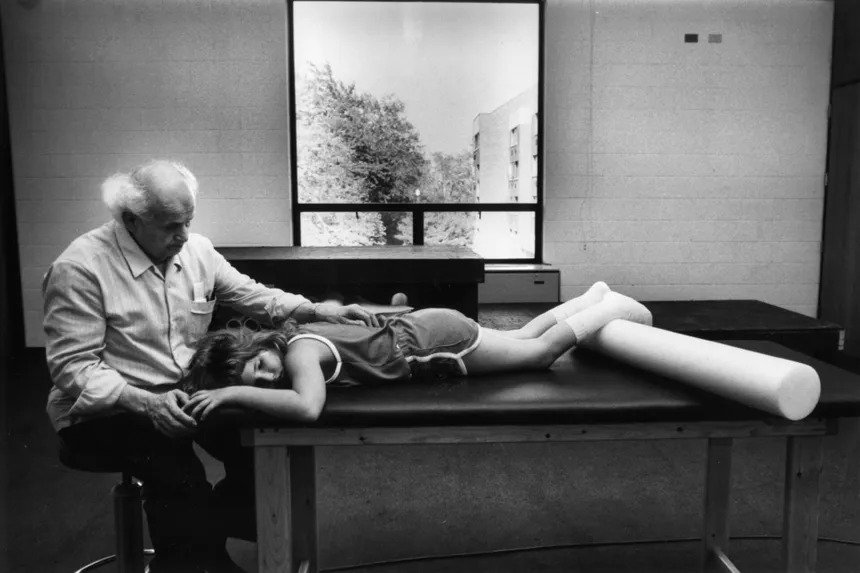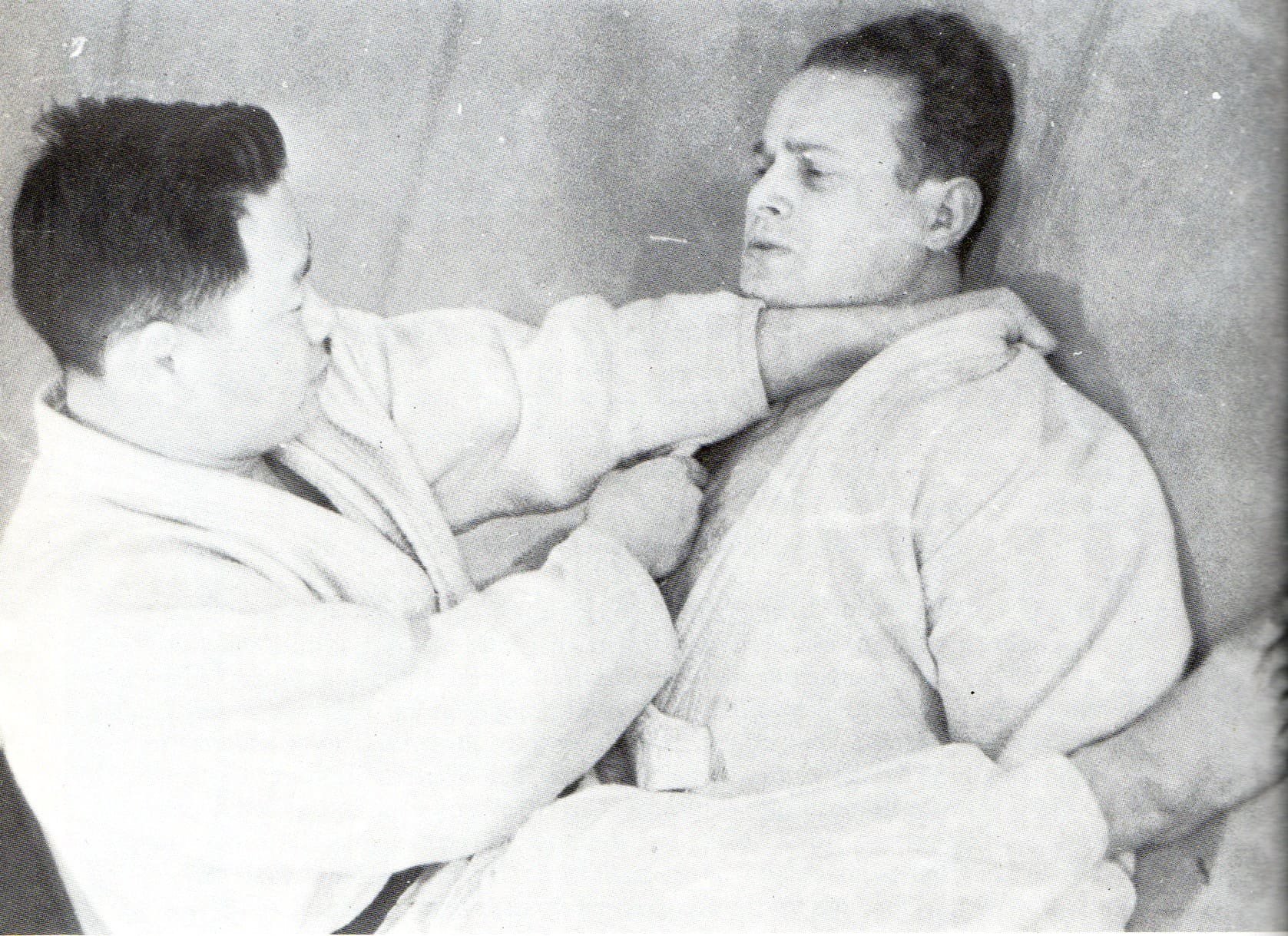
Personal Trainer and Feldenkrais Method Practioner with 20 years Experience in Old Street (Shoreditch) London. One to One and Online.
WTF is the Feldenkrais Method?
In this article I break down what is the Feldenkrais Method, how it works and why it can help you move better, with more ease, efficiency and less pain.
Unleashing Your Body's Potential: The Feldenkrais Method
The quest to achieve physical and mental well-being has propelled individuals to explore an array of alternative therapies and methods. One such technique that has gradually gained recognition and reverence is the Feldenkrais Method. Developed by Dr. Moshe Feldenkrais in the mid-20th century, this groundbreaking approach to movement and awareness has captivated a growing following due to its transformative effects on the human body and mind.
Understanding the Feldenkrais Method
The Feldenkrais Method is a somatic educational system that aims to improve movement, posture, breathing, and self-awareness through gentle, mindful movements. Named after its founder, Dr. Moshe Feldenkrais, a physicist and engineer, the method is underpinned by the belief that individuals can harness the neuroplasticity of the brain to rewire their movement patterns and enhance overall functioning. Moshe was publishing ideas of neuroplasticity in his body Body & Mature Behavior back in 1949! Scientific podcast presenters such as Andrew Huberman have more recently popularized the idea of neuroplasticity and it has become a popular topic of discussion.
The method encompasses two distinct approaches: Awareness Through Movement (ATM) and Functional Integration (FI). The former is primarily exercised through group classes, where participants engage in guided movements and sensory explorations to enhance kinesthetic self-awareness. These are taught through verbal cues and are not demonstrated to show you the ‘right’ way to do it.
The latter involves one-on-one sessions, during which a certified Feldenkrais practitioner tailors hands-on movements and manipulations to address the unique needs and limitations of the individual. This helps a person to sense different movement options that otherwise they might not be able to feel and perform themselves without pain or discomfort.
Benefits of the Feldenkrais Method
1. Improved Movement Efficiency: The method fosters a deep understanding of how one moves, leading to enhanced coordination, flexibility, and agility. By honing movement patterns, individuals can mitigate strain and exert less effort in their daily activities, thereby averting potential injuries.
2. Pain Relief: Many practitioners of the Feldenkrais Method report a reduction in chronic pain, particularly in areas like the back, neck, and joints. Through the gentle and exploratory movements, individuals can release muscular tension, correct imbalances, and alleviate discomfort.
3. Enhanced Posture and Alignment: Feldenkrais facilitates heightened body awareness, allowing individuals to address postural misalignments and imbalances. As a result, practitioners experience improved posture, reduced strain on muscles and joints, and an overall sense of lightness and ease.
4. Stress Reduction and Relaxation: The method's emphasis on mindful movements and breath awareness can be profoundly calming and stress-reducing. Through practice, individuals can cultivate a greater sense of relaxation, tranquility, and mental clarity.
5. Enhanced Performance: Athletes, dancers, musicians, and individuals in various physical disciplines have incorporated the Feldenkrais Method into their training regimens to optimize their performance. The method's focus on refining movement quality and efficiency can lead to enhanced skill acquisition and execution.
6. Neurological Rehabilitation: The Feldenkrais Method has also shown promise in aiding individuals with neurological conditions such as multiple sclerosis, stroke, and cerebral palsy. By harnessing the brain's adaptability, practitioners can reorganize their movement patterns and alleviate some of the challenges posed by these conditions.
7. Mind-Body Connection: Central to the Feldenkrais Method is the cultivation of a deep mind-body connection. Practitioners often report heightened self-awareness, improved focus, and a greater sense of embodiment.
The Continued Evolution of Feldenkrais
Decades since its inception, the Feldenkrais Method continues to evolve and expand its reach. With its growing acceptance in mainstream wellness and rehabilitation contexts, an increasing number of medical and movement professionals are integrating its principles into their practices. Additionally, research endeavors have sought to illuminate the method's efficacy and mechanisms of action.
The Feldenkrais Method can benefit individuals seeking to improve their movement abilities, alleviate pain, and enhance their overall well-being. This method is especially helpful for people recovering from injuries, dealing with chronic pain, or looking to enhance their physical performance. It can also aid those struggling with conditions such as arthritis, Parkinson's disease, or multiple sclerosis.
By focusing on increasing awareness and refining movement patterns, the Feldenkrais Method can help individuals of all ages and physical abilities to move with greater ease, flexibility, and coordination.
Incorporating the Feldenkrais Method into Your Life
Should you wish to embark on a journey of heightened movement awareness and well-being, seeking out certified Feldenkrais practitioners or attending group classes can be an enriching starting point. By immersing yourself in the gentle, exploratory movements and honing your kinesthetic self-awareness, you may unlock your body's innate potential and propel yourself towards a newfound sense of vitality and harmony.
The Feldenkrais Method stands as a testament to the profound adaptability and potential for growth inherent in the human form. Through its teachings and practices, countless individuals have discovered new dimensions of movement, self-discovery, and overall flourishing. Whether you seek to alleviate chronic pain, enhance your physical performance, or simply deepen your mind-body connection, the Feldenkrais Method offers a transformative pathway toward holistic well-being.
The Backstory of the Feldenkrais Method
Moshe Feldenkrais in addition to being a physicist and engineer, was also one of the early students of Judo in Europe.
Born in Slavuta, Ukraine in 1904 to Jewish parents, Moshe immigrated to Palestine in 1918. Palestine at the time was under British Mandate and as more Jewish immigrants were received, tensions were raised. Feldenkrais and his peers worked to learn jujitsu techniques for real life application in the street to defend themselves. He published a book on Jujitsu that was based on what he had learned by fighting and teaching others and was intended as a training tool for the Haganah, or Jewish defense forces. Much of his work was incorporated into the self-defence system that became known as Krav Maga today.
Feldenkrais left Palestine to study engineering and physics in Paris. There he met Judo’s founder, Jigoro Kano, in 1933. Kano asked him to demonstrate some of these Jiu Jitsu techniques that he had adopted. Kano was impressed and encouraged him is study Judo to take his skills further.
Moshe was taught Judo by Mikonosuke Kawaishi who led the development of Judo in France and much of Europe. Moshe earned his Shodan (1st degree black belt) in 1936 and a Nidan (2nd degree black belt) in 1938. He published several books on Judo including his most important Judo work: Higher Judo -Groundwork which covers many of the techniques and movements commonly seen in Brazilian Jiu-Jitsu today.
Moshe had suffered a knee injury in 1929 playing soccer and this spurned him on to learn ways to move better with more comfort. With the knowledge of using the body as a whole from Judo coupled with his physics and engineering brain, the importance of weight distribution, alignment & balance, helped him to develop the Feldenkrais Method.
The Feldenkrais method looks to improve using the body as a whole, how things connect and cooperate from head to toe. It almost goes without saying that when things work better together your sporting performance will improve.
Get in touch today to learn how the Feldenkrais Method can help improve your Brazilian Jiu-Jitsu, Climbing and ease in every-day living.




